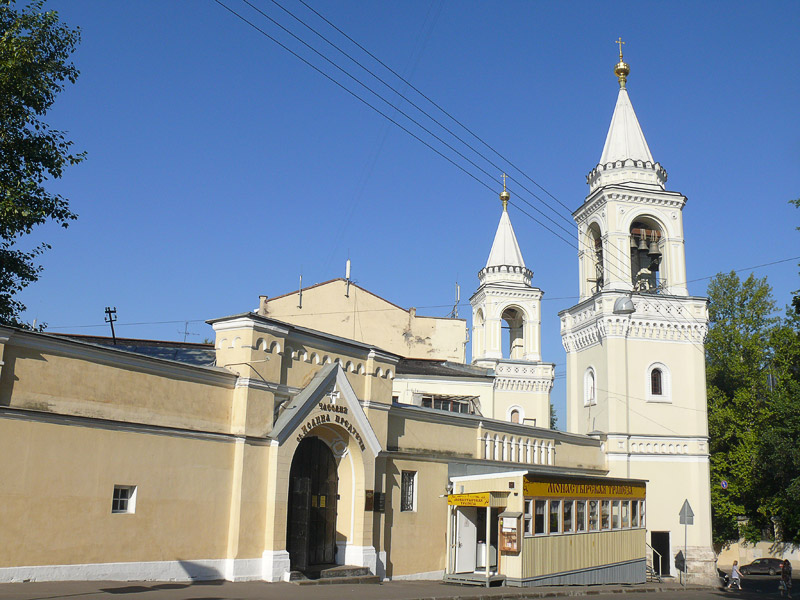One day I was in the center of the city and decided to get away from it, heading in the direction of Taganskaya Station to meet our group there. This wandering took me circuitously through the region of Kitai-Gorod. It was a nice walk and nice day, but due to the casual nature of the place today, I never quite grasped what lie there until looking for information (and translation) later.
Passing through Lubyanka Square actually brought me closer to the legendary, fearful KGB than I even would have hoped. Meaning “Committee for State Security,” this group acted as the defence, intelligence, and secret police branch of the Soviet Union regime from 1954-1991, today broken up into other organizations such as the Inter-republican Security Service. The Lubyanka Building had been the central headquarters of the secret since its creation as the Cheka. For nearly a century this place would inspire fear in passers-by, doubt at whatever is foreign or dangerous, anxiety about being dragged in and imprisoned inside the building.

The Solovetsky Stone, a simple but powerful memorial for those many victims; flowers appear like this on most memorials year round.
But today the square feels like just another part of the city. A monument 2002 monument placed on the square provided a simple reminder of past ills, a stone with a plaque honoring victims of the Gulags. Reading about it connected a few dots in my head, for I have heard of undesirable monuments being moved, changed, or hauled away (not unlike various victims of the KGB in the past). Many Russians today balance pride and shame in a miraculous way, bearing fond memories of the Soviet state while remembering, or perhaps trying to forget, its flaws. Some of the statues of Soviet leaders currently standing in a tight cluster near one developing area of Muzeon Park southwest of the center have caused long conflicts, continuing even today. The legacy of government oppression remains a dark side to the security and hope of a peaceful and safe life that the KGB was meant to provide. 2012 protestors chose this site as a place to hold an anti-Putin rally, connected his former KGB service to oppressive leadership.

The KGB Crest. Since I neglected to take pictures that day, pictures in this post appear courtesy WikiCommons.
I have had the chance to speak with several older Russians, all of whom remember the bitter past of Soviet enforcement: each one knew or was related to a victim of Stalin’s purges. It is with respect to painful memories like these that many want to remove connections to their perpetrators. This does not mean forgetting, for who can forget the loss of family or friend with no warning, that lifestyle of fear? Instead, the goal is to remove the honor associated with monuments, to draw a contrast between those great Russians worth remembering, and those who are remembered with infamy.
Information found at the following sites, having located the place per Google Maps:
http://ru.wikipedia.org/wiki/Здание_органов_госбезопасности_на_Лубянке
http://en.wikipedia.org/wiki/KGB












